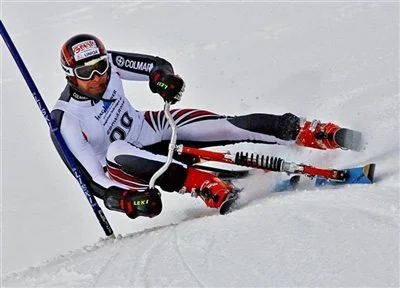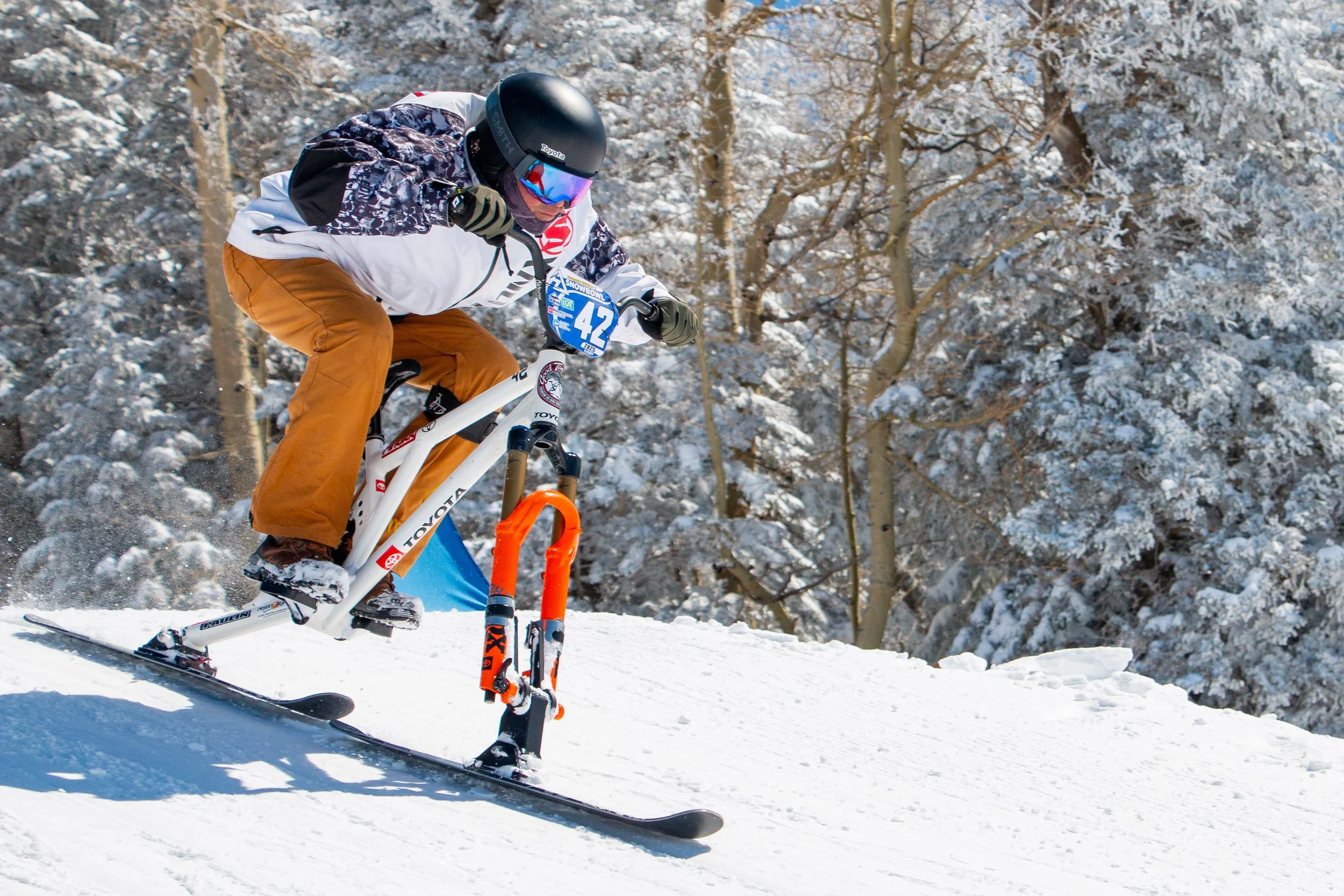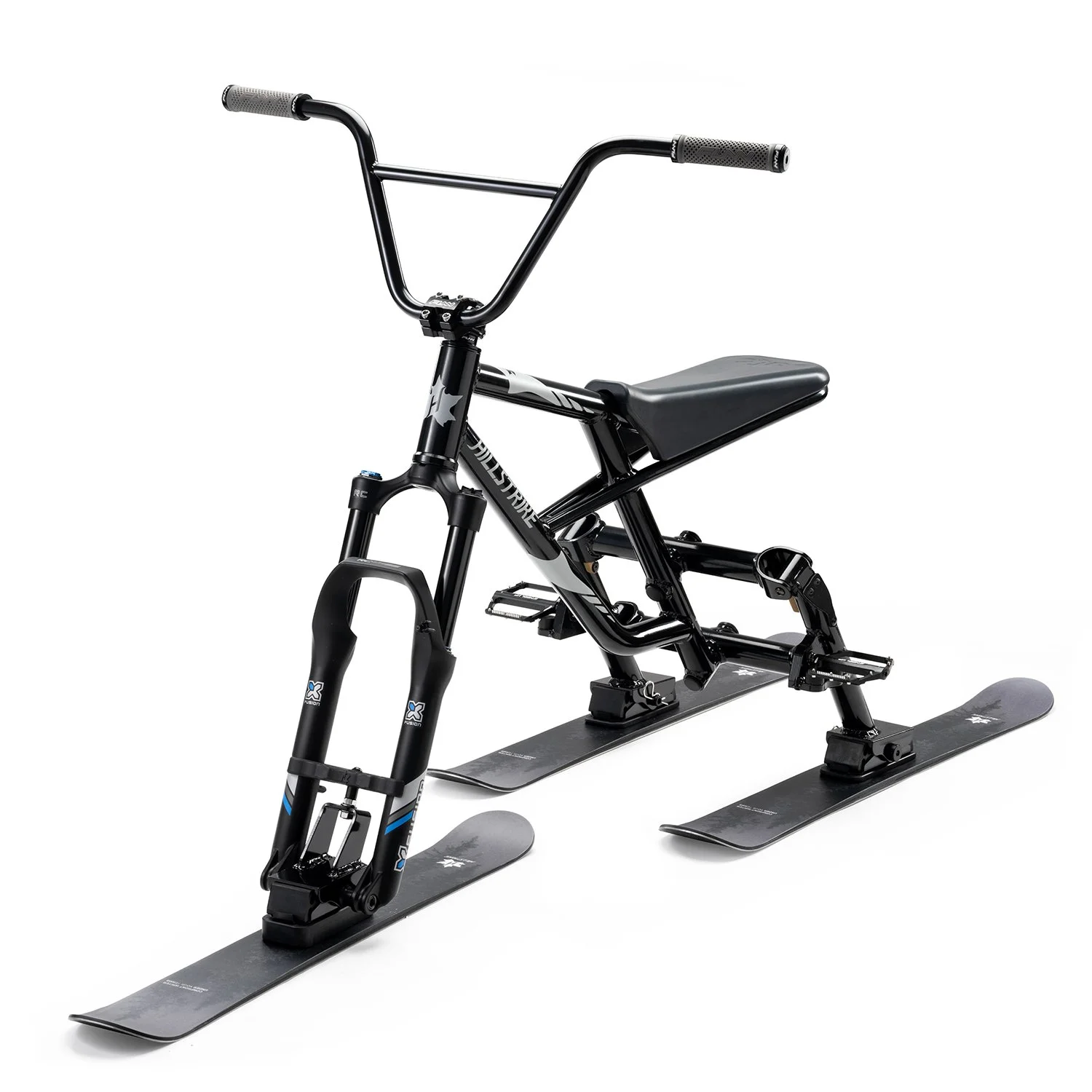3 TYPES OF SKIBIKES
TYPE I | CLASSIC SKIBIKES (SKIBOBS)
Rooted in the European origins of the sport, Type 1 skibikes maintain the traditional "Skibob" design that surged in popularity during the 1960s and 70s. Built for a low center of gravity and designed to be ridden seated, these bikes provide a stable and controlled ride. Riders typically use footskis to enhance balance and edging, making them ideal for a smooth, calculated descent.
TYPE II | FREESTYLE SKIBIKES
A modern evolution from North America, Freestyle Skibikes take heavy inspiration from downhill mountain biking. With a frame that closely resembles a mountain bike, these high-adrenaline machines allow riders to shred the slopes in both a standing or seated position. Unlike traditional skibikes, they are often ridden without footskis, relying instead on footpegs, rests, & pedals for control. Many models boast adjustable front and rear suspension, built to handle jumps, tricks, and aggressive terrain.
TYPE III | 3-SKI SKIBIKE (TRIKES)
A new and fast-growing innovation, 3-Ski Skibikes bring a trike-style design to the slopes. Featuring three skis, with one mounted on the handlebars for steering and two positioned underfoot, these bikes are exclusively ridden standing up. Their design offers a unique blend of control, stability, and maneuverability, making them a favorite for those seeking a fresh and exhilarating way to ride. Most models come equipped with front suspension, ensuring a smoother experience on rough terrain.
FAQs
What is a SkiBike?
A skibike is a bicycle-like device engineered with skis instead of wheels, designed to use gravity for downhill riding on snow-covered slopes. It combines elements of skiing and biking, offering a unique and exhilarating way to navigate the mountain.
Is skibiking physically demanding?
Compared to skiing or snowboarding, skibiking provides a more balanced and low-impact workout. Riders can sit or stand, depending on the bike style, and experience less strain on the legs, knees, and back. The reduced fatigue factor allows for longer and more enjoyable sessions on the mountain.
How do you stop on a Skibike?
Skibikes stop using the same principles as skiing or snowboarding—by applying pressure and edging to control the skis, using skidded turns, or making a slight uphill turn to bring yourself to a stop. With proper technique, riders can easily regulate their speed and maintain control on the slopes.
How do skibikes ride the chairlift??
Much easier than you might think! Skibikes are lighter than mountain bikes, and depending on the model, riders typically carry them on the chairlift by resting them on their lap or holding them at their side. Skiers board and exit the lift on foot or using footskis, just like traditional skiers. Always check with your resort and skibike manufacturer for specific chairlift loading guidelines.
Is skibiking difficult to learn?
Not at all! Thanks to their stable design, skibikes have a faster learning curve than skiing or snowboarding. Most beginners can grasp the basics within a few runs and start enjoying their ride quickly. Skibiking is also a versatile option for adaptive riders—it has been used in adaptive ski programs for decades to make winter sports more accessible. Many resorts now offer skibike lessons, so check with your local ski school or contact the ASA for more information.



